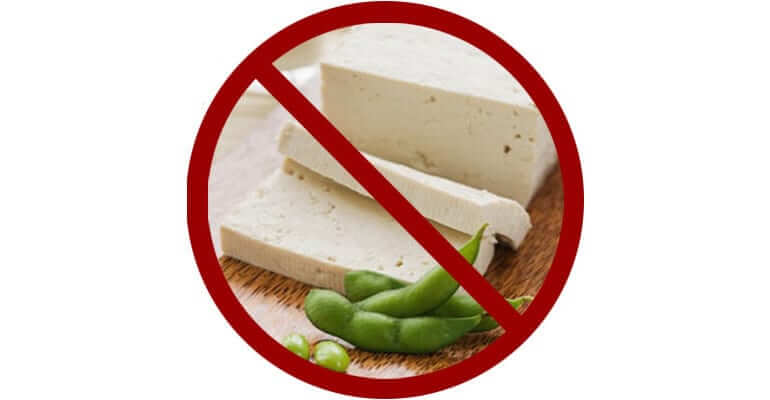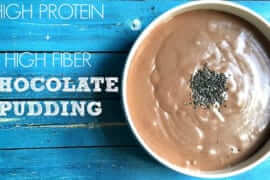Let me preface this post by saying that I used to be an avid soy eater. Having gone vegetarian at sixteen and blindly following the advice of the USDA, FDA, ADA and other agencies, I thought I was so healthy. I scoffed at meat eaters. I was such a little jerk. It’s funny, I never made the connection between my “healthy” diet and my declining health. I had rapid weight gain and loss, crazy mood swings, awful periods and horrible skin. Do I really blame soy for this? Hell yes I do! That along with my other vegetarian staples: wheat, sugar, various grains and vegetable oils. I cringe.
It is also interesting to note that soy is one of our biggest cash crops, it is largely grown in the US and according to the USDA, over 94% of it is genetically modified. We know that GMO crops destroy not only our health, but also the health of the environment. These crops are doused with harsh chemicals that seep into the land and end up in the water supply. This ends up destroying entire ecosystems and severely disrupting several others. Last time I checked, my grass-fed meat comes from a farm up the road that actually builds topsoil and provides nourishment for the land. Still think soy is so environmentally friendly?
“After cattle ranching, soybeans are the main driver of Amazon destruction,” said Roberto Smeraldi of Friends of the Earth Brazil. “Today, we have lots of areas being cut down by small holders with the idea of selling them to soybean farmers and in other areas pasture is being converted to soy.” (1)
We have an overabundance of soy, which is exactly why it is marketed as a health food. To drive sales. It’s genius, really. How do you take an unhealthy, cheap and destructive product off your hands? You convince the public that it’s good for them. And is it good for them? Not quite.
Soy oil is one of the most widely used oils. To extract the oil from a soy bean, the bean must be highly processed, beyond recognition as a food. It isn’t a food. Manufacturers use hexane, a neurotoxin to extract the oil. And what’s left is after making this oil is a ton of processed, refined junk. Otherwise known as your healthy veggie burger! Jokes aside, the leftovers go into making mock meats, soy milk, and into almost every junk food. Have you read the ingredients on a box of Oreos, or Funfetti cake mix, or Pillsbury dough? They all contain soy!
Not only is soy processed beyond a food, it is high in phytic acid. Phytic acid is naturally found in many plants and legumes, it inhibits the absorption of minerals like zinc and iron. Soy is also full of trypsin inhibitors. Trypsin is an enzyme secreted by the pancreas that breaks down protein in the small intestine. Thus, vegetarians eating soy for protein are not really receiving the full benefits of protein.
Soy is high in phytoestrogens (even NIH admits it). Phytoestrogens mimic estrogenic effects in the body. Therefore, soy interferes with our natural hormone production. Furthermore, due to the fact that phytoestrogens mimic estrogen in the body, this causes increased cell proliferation, which can lead to cancer; particularly breast or ovarian cancer. (2)
In 1992, Swiss Health Services discovered that eating 100 grams of soy per day provides the estrogenic equivalent of the pill. Which is why soy has been linked to infertility. And this study from Harvard found that men consuming the equivalent of one cup of soy milk per day had 50% lower sperm count than men who did not consume soy (even accounting for other factors like age, caffeine and alcohol intake, etc).
Not to mention that if you’re consuming soy because you think it’s more environmentally friendly, it definitely isn’t. Consider how far it has to travel, how much land is necessary, how much water, how many animals were killed to plow that land. Hell, according the World Wildlife Foundation, in South America, almost 4 million hectares of forests are destroyed every year, 2.6 million of them in Brazil alone. And yes, while majority of it grown for livestock feed – your’e likely also consuming it.
And if you think a veggie burger is healthier than a grass-fed one, just take a look at all these ingredients:
Ingredients:WATER, SOY PROTEIN CONCENTRATE, WHEAT GLUTEN, CONTAINS LESS THAN 2% OF METHYLCELLULOSE, SALT, CARAMEL COLOR, DRIED ONIONS, YEAST EXTRACT, SESAME OIL, HYDROLYZED WHEAT PROTEIN, NATURAL AND ARTIFICIAL FLAVOR (NON-MEAT), DISODIUM GUANYLATE, DISODIUM INOSINATE. CONTAINS: SOY, WHEAT, SESAME.
It ain’t even gluten-free! But at least it doesn’t have all that (heart healthy) saturated fat.
This post is part of the Monday Morning Mix-Up. As well as Real Food Wednesday and Whole Foods Wednesday.




